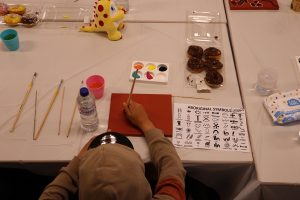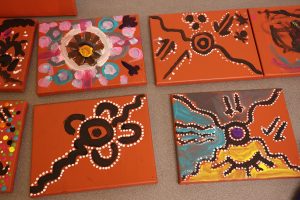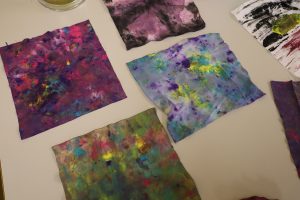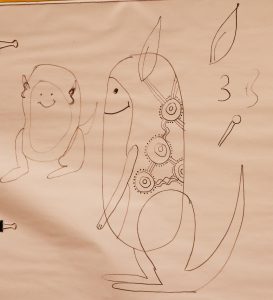The long-awaited safety symbol for Aboriginal children and young people in care, Nunga Oog, is taking shape after our face to face workshops kicked off earlier this month.
A group of Aboriginal children and young people joined artist Sasha Houthuysen during the October school holidays to start designing what Nunga Oog could look like. These sessions came on the back of art boxes we sent to selected residential care facilities in July to invite young people to come up with some initial designs.
After the delay in workshops due to COVID-19, it was great to be able to sit down with the young people and see and hear their ideas in person. They told us that:
Nunga Oog should…
– look different to Oog
– have some black on it
– have the Aboriginal flag on its belly
– have colours of the Aboriginal flag
– be cuddly
– be gender free
– not be so round
– have big ears to listen to children and young people
– tell a story of safety by using symbols
– be brown with symbols and dot work (journey lines).
The workshops also provided opportunities for the children and young people to take away some new-found art skills and learn about Aboriginal symbols and how they can tell stories using these symbols. The young people were keen for us to share their designs with you.



And after the second workshop, the draft outline of Nunga Oog began to take shape…

Workshops will be continuing in the January school holidays to help design Nunga Oog, with sessions being planned across the state in collaboration with Aboriginal artists. If you know an Aboriginal child or young person in care who would like to get involved, please register their interest by emailing Leila at leila.plush@sa.gov.au or Conrad at conrad.morris@sa.gov.au by Friday 13 November.

2 Responses
I love these designs the children should be so proud of themselves !
Congratulations:)
looking good..really pleased this is taking shape.